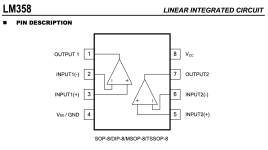i can't read the numbers on the two 8-pin chips on the bottom side of the board, but typically near the charger output there's a comparator. that's prbably the larger chip. you can look up the number on the chip to get it's specs and what pins do what.
it's going to have a voltage divider (two resistors, one to +v supply, one to ground, connected in the middle and to a pin on the comparator that's an input). that voltage divider is usually setup to cause the comparator to "switch off" at some specific voltage, which is the charge termination.
it's not really usually switching off at a voltage, but rather once charge current drops below some point, but that's still based on the voltage at this divider, so experimentation with the resistances in the divider will still usually change the termination voltage.
if you find the divider, you can replace both resistors with a single potentiometer that equals the value of the two resistors in series. adjust the pot before installation to match the resistances previously there (from center to each outer leg). then install with one outer leg of the pot goes to the point one resistor connects into the circuit, the center leg of the pot goes to where boht resistors connected together, and the other outer leg goes o the other resistor's connection point into the circuit.
then you can very very slowly adjust the pot while measuring the charger output voltage (not connected to the battery), until it reads what you want termination voltage to be.
or you can try figuring out enough of the circuit to be able to do math ratios on the resistances vs the voltages, and calculate what resitor you can parallel with one of the other two to get the output you watn.
or experimentally parallel a ptoentiometer across just one resistor and adjsut it until it gets what you want; if it doesn't then put it on the other resistor instead and try again.
etc.
keep in mind it's possible to let all the smoke out during any of these steps, so...while experimentation and diy can be fun, it can also be expensive.




